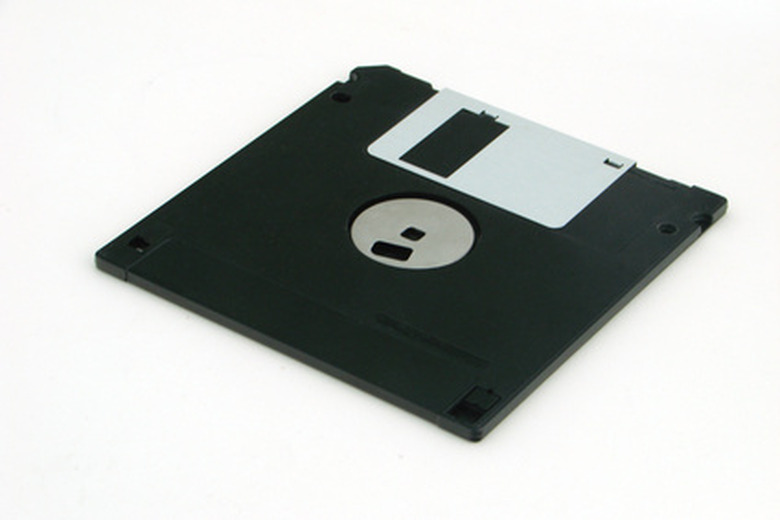Types Of Diskettes
Since 1971, computers have been able to store and access data on floppy diskettes. This means of data storage was invented at IBM by a team lead by Alan Shugart. Since then, floppy diskettes have evolved. Their dimensions have grown smaller while their capacity has increased. Although diskettes are still in use, they are being outdated by flash drives and, to an extent, CDs. Nowadays, most blank diskettes will be pre-formatted.
Single Sided
Single Sided
The earliest diskettes, now obsolete, were single sided diskettes introduced in 1971. The first ones introduced were 8 inches square. The more commonly used and remembered ones were 5 1/4 inches, introduced in 1976. Initially, single sided disks were also single density, but with improvements became double density. Single sided, single density were labeled as SS/SD or 1S/1D diskettes and could hold up to 100K of data. When they became double density, the reference changed to SS/DD or 1S/2D and could hold 180K data.
Double Sided
Double Sided
Later the 5 1/4 inch floppy diskettes were improved again, making them double sided and double density, referenced as DD/DD or 2D/2D. These newer (but now obsolete) disks could hold 360K of data. In time, the double sided diskette saw improvements and became a high density disk. These disks, labeled as DD/HD or 2D/HD could hold 1.2Mb of information.
Micro Floppy
Micro Floppy
The surviving diskette still in some use in 2010 is the micro floppy, the smaller 3.5 inch diskette in the harder, plastic case–as opposed to the softer covers of the larger floppies. This diskette originally came out in 1981 as a double density disk, capable of holding 720K of data and was labeled simply DD. The high density improvement, or HD diskette, came afterward, capable of storing 1.44Mb or 2.88Mb of data.
Cite This Article
MLA
Donahue, Linda. "Types Of Diskettes" sciencing.com, https://www.sciencing.com/types-diskettes-7374832/. 24 April 2017.
APA
Donahue, Linda. (2017, April 24). Types Of Diskettes. sciencing.com. Retrieved from https://www.sciencing.com/types-diskettes-7374832/
Chicago
Donahue, Linda. Types Of Diskettes last modified March 24, 2022. https://www.sciencing.com/types-diskettes-7374832/
